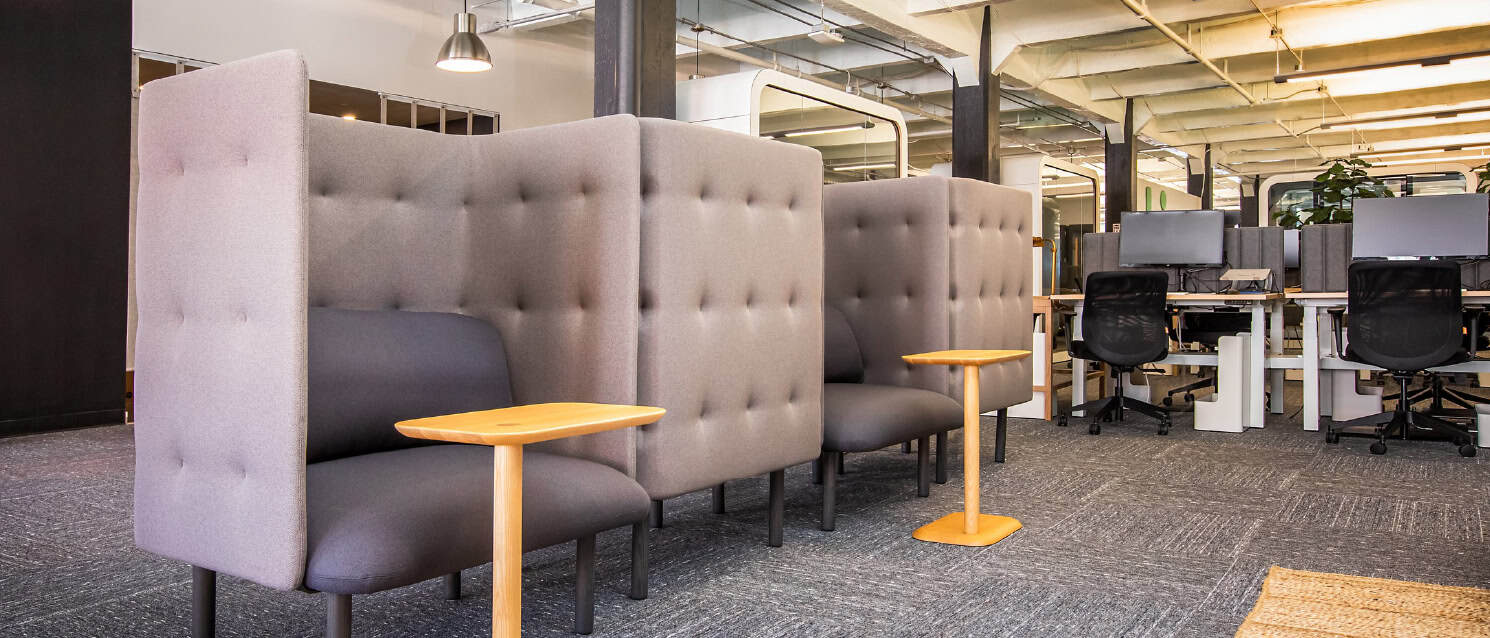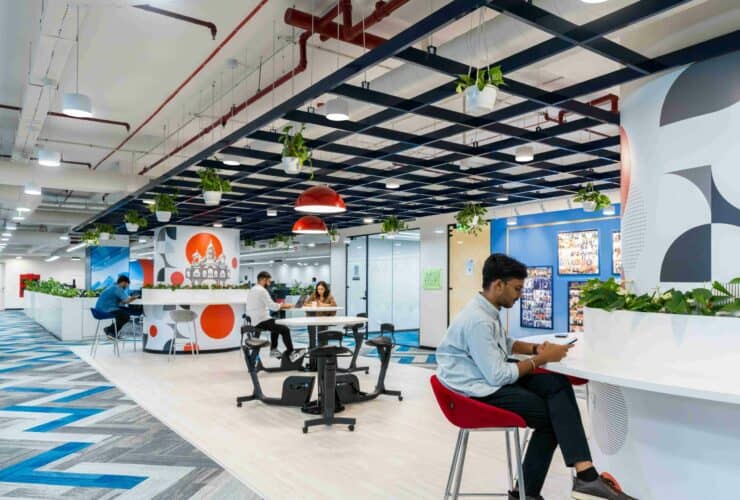How Acoustics and Sound Control Create a Better Workplace
Quality work often requires focus, concentration and consistent effort.
Hence there is little doubt that surrounding yourself with the right environment is important, especially if you want to produce a prolific, productive output. With workplaces now being majorly flexible and employee movement being often dynamic throughout the space–it is a given that there will be a degree of excess residual sound and noise produced. The workplace is home to a variety of employee types, working styles and schedules. It can often get hectic, and it can get so fast.
Keeping employees focused and motivated is always the goal. Hence it is important to keep a firm grip on the amount of sound (or noise) that a workplace is producing. Worktech identified that only 30% of office occupants are happy with the sound their workplace produces. It also quoted the British Journal of Psychology as identifying ‘excess noise’ as a chief factor in increasing job dissatisfaction. Proper acoustics and sound control, hence, forms a direct and advertent part of the overall sphere of employee wellness and a healthy culture. It cannot be ignored.
Workplace design benefits tremendously from proper acoustics and sound control. Let’s learn how to establish the parameters that lead towards it, below.
Soft flooring, Furnishing and Acoustic Paneling
In an open office, constant movement across the floor is a given. Hence, there is a need to eliminate hard floor surfaces–like natural wood, porcelain and ceramic– from the floor area as much as possible. Carpets can acquire a major role here. So flooring made from natural fabrics like hessian and linoleum can work wonderfully. Vinyl flooring also offers a strong option for noise reduction throughout the floor.
Sound can also be deflected via interoffice furniture. Couches, lounge chairs and high-backed seating areas can provide ideal seating options that minimize harsh sounds and discrepancies. Acoustic ceiling tiles can also act as crucial advocates in reducing negative sounds. Wall partitions, filing cabinets etc. can also be used strategically throughout the space to both divide and minimize the noise flow–and absorb noise across a large range of frequencies. Acoustic wall panels also play a major role in this category–by absorbing sound over large areas due to their presence in the workplace.
Biophilic Elements for Sound Suppression
The advantages of biophilic elements in the workplace are manyfold, including acoustic ones. Firstly, they help diffuse sound throughout the space. Their uneven spaces offer, ironically, a more even distribution of sound waves when it hits them, also reducing the overall echo and intensity of sound. Secondly, they also exhibit the properties of converting sound waves into different forms of energy–functioning a little on the lines of actual acoustic panels. When sound waves strike flexible materials like plants, they are converted to other forms of energy due to the material vibrating at the moment of impact.
Things like live biophilic walls and green walls offer this characteristic as a chief function. Their prominence in recent years as a major part of workplace design speaks about their positive qualities.
Adaption of Phone Booths and Privacy Pods
Providing employees the option of privacy at work isn’t just a best practice. It is also a gateway to proper acoustics. Adaption of phone booths, privacy pods offer avenues for private engagement for employees. They also do their part on the other side of the spectrum, by dampening both incoming and upcoming sound. These also have become a major part of modern corporate interior design, and have been adapted by most major organizations.
They also come in a large variety and budget ranges. Often, their mobile and portable nature also adds to the overall flexibility of the working areas and floor plan., helping add even more to the organization and its overall wellness, and ensuring that employee agency and focus remains at the forefront. And any and all discrepancies at the minimum.
In conclusion: How Good Acoustic Design Can Transform a Workplace
Proper acoustic control offers a multi-fold advantage to workplaces, especially when it comes to being geared towards their health and wellness. Some of them can be pointed out individually as:
- Helping improve the overall soundscape
- Facilitating better communication in the work area
- Reducing employee stress levels
- Improving employee well-being overall
- Adding to employee productivity and privacy
Employees need to be empowered in the workplace, as is common knowledge. Ensuring that work conditions remain geared to their advantage and well-being is the first important step in the journey towards that. The workplace needs to be a place, where despite all the challenges, everyone finds the space and focus to do their best work. Modulating and controlling sound plays a large role in that, and should be taken into serious consideration.
Related Articles: Pods, Privacy Strategies, and Home Like Interiors in Workplace Design
An information sponge since time immemorial, taking up writing was a natural career for him. He’s often found absorbed in his laptop, trying to cram as much detail as he can into his content. He’s found to be a relaxed, collaborative individual when he does finally decide to show his face to colleagues. Obsessive by nature, he loves building PC’s, collecting old albums, updating his knowledge, and going on long natural treks.



